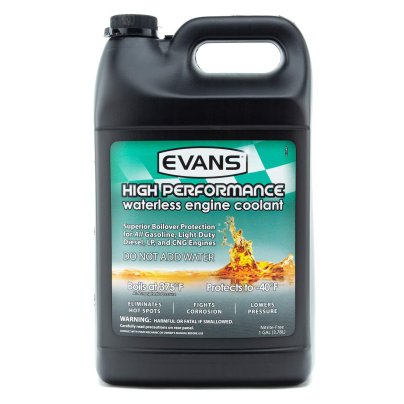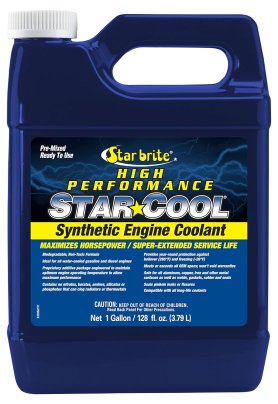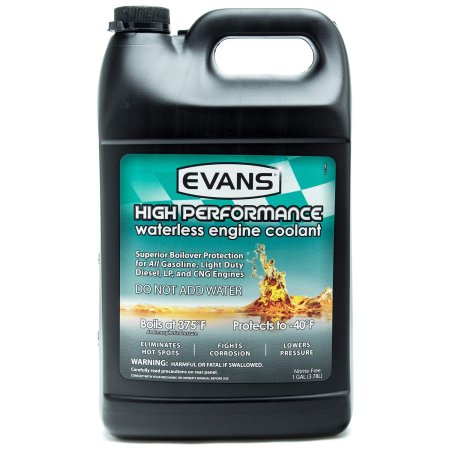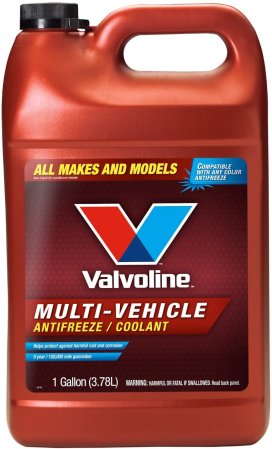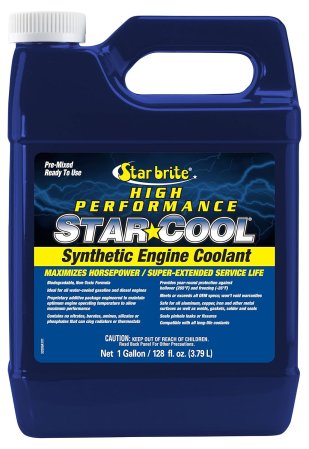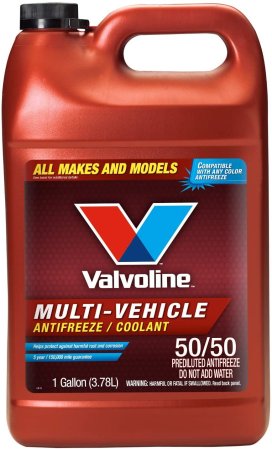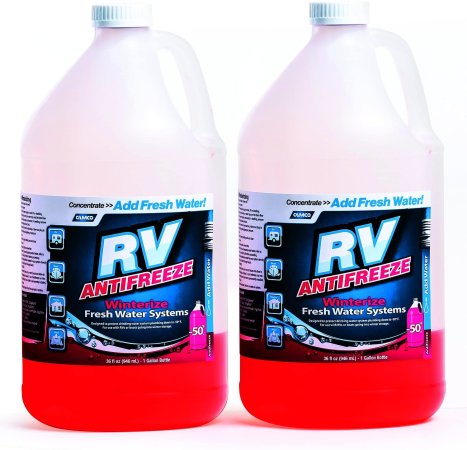We may earn revenue from the products available on this page and participate in affiliate programs. Learn more ›

Antifreeze is the liquid that saves your engine from overheating in high and low temperatures. Antifreeze liquid typically comes as a mixture of water and glycol chemicals that act as lubricants and anti-corrosion agents to keep your radiator in good condition. Read on for our breakdown of some of the best antifreeze the market has to offer.
Summary List
- Best Overall: Evans High-Performance Waterless Engine Coolant
- Best Value: MaxLife Valvoline Universal Antifreeze/Coolant
- Best Synthetic: Star Brite Star-Cool Premium Synthetic Engine Coolant
- Best Universal: Valvoline Multi-Vehicle 50/50 Prediluted Ready-to-Use Antifreeze
- Best for an RV: Camco RV Antifreeze
Benefits of Antifreeze
- Temperature protection. Antifreeze liquids are better at dissipating heat than other coolants. They prevent cooling systems from overheating during extreme heat conditions and from freezing during the winter.
- Prevent rust and corrosion. Rust and scale deposits tend to build up over a vehicle’s cooling system over time. That can cause a system failure. While regular coolants flush away the rust and deposits, antifreeze coolants have additives that prevent rust and corrosion from occurring in the first place.
- Prevent engine failure. When an engine overheats, the oil in the system starts to thin. With time, the unlubricated metals could start hitting each other in the combustion process. This domino effect results in an engine failure that could have otherwise been prevented.
- Better than water. Antifreeze coolants were created to overcome the shortcomings of water as a coolant. Water has low boiling and freezing points and is, therefore, not a suitable coolant in places with extreme weather conditions. Most antifreeze liquids, on the other hand, stay neutral despite temperature changes to prevent the freezing or overheating of critical engine parts.
- Extend the life of engine components. Antifreeze liquids prevent electrolysis that leads to the erosion of metal components. It also extends the life of plastic and rubber components in the cooling system that often melts as the system overheats. This will also save you some costly repairs.
Best Antifreeze: Reviews & Recommendations
Best Overall
Evans High-Performance Waterless Engine Coolant
Best Value
MaxLife Valvoline Universal Antifreeze/Coolant
Best Synthetic
Star Brite Star-Cool Premium Synthetic Engine Coolant
Best Universal
Valvoline Multi-Vehicle 50/50 Prediluted Ready-to-Use Antifreeze
Best for an RV
Camco RV Antifreeze
Our Verdict
The best engine coolant that improves engine performance and has the best anti-rust and corrosion protection is the Evans High-Performance Waterless Engine Coolant.
Get the MaxLife Valvoline Universal Antifreeze/Coolant if you are on a budget.
Types of Antifreeze
Universal Antifreeze Coolants
Universal coolants are also known as 50/50 premix coolants. This is because they contain 50 percent demineralized water. Therefore, there is no need to dilute the solution before use. Universal coolants have low silica content to protect delicate parts of the engine and the radiator from corrosion.
Organic Antifreeze
Organic antifreeze is manufactured using Organic Acid Technology (OAT). Phosphates and silicates are eliminated from the liquid body, and the liquid is further formulated with corrosion inhibitors to prevent rust. This type of antifreeze is available in dark green, orange, pink, blue, and red. The service distance of a typical organic coolant is 150,000 miles, after which it should be replaced.
Inorganic Antifreeze
Inorganic antifreeze is formulated using Inorganic Acid Technology (IAT), and it contains ethylene glycol. It also contains silicates and phosphates, which could cause corrosion if not flushed out after a service distance of 30,000 miles. Inorganic coolants are suitable for older cars made from the early 1920s to the late 1990s. It comes in either yellow or green.
Hybrid Organic Acid Technology (HOAT)
HOAT is an organic acid that includes silicates as additives. The silicates inhibit corrosion on the alloy parts of the engine. HOAT coolants have a service life of five years or 150,000 miles, after which they should be flushed out. This type of coolant is either yellow or orange.

Antifreeze Pricing
- Under $30: This category has inexpensive antifreeze versions that contain ethylene glycol. They are mostly inorganic coolants that are green in color. They offer resistance to corrosion. They, however, have a short service life of only two years.
- $35-$60: This price point features high-performance antifreeze coolants that are ethylene glycol-free. They contain additives like nitrates, silicates, and sulfites that prevent corrosion and seal up leakages. They have a long service life of at least five years.
- Over $65: This is the price range you should be looking at if you want to spend a few extra dollars on a premium antifreeze. Antifreeze in this category are formulated with rust and corrosion inhibitors, and they have high boiling and cooling points. They are also eco-friendly and have a service life of at least six years.
Key Features
Boiling/Freezing Points
The best coolants have high boiling and freezing points. Antifreeze coolants need to withstand a lot of heat before breaking down their molecules and vaporizing. Typically, they should remain stable at temperatures of 200 degrees Fahrenheit. The coolant should also prevent engine ice, even at temperatures of -20 degrees Fahrenheit.
Liquid Color
Antifreeze coolants come in different colors to show that the liquid is formulated in a chemically different manner. For instance, green represents coolants formulated using Inorganic Acid Technology and contain silicates and phosphates as the main corrosion inhibitors. Orange coolants are formulated using Organic Acid Technology and have additives that act as corrosion inhibitors. Orange coolants also last three years longer than green coolants.
Type of Additive
Most antifreeze coolants have additives that give extra properties to the lubricant to enhance its performance. A common additive is demineralized water that is formulated as a 50/50 mix. Ethylene glycol is also a popular additive, as it has a low freezing point and is cheap to produce. Silicates, phosphates, and propylene glycol are also non-toxic additives that prevent corrosion to the vehicle’s cooling system.
Other Considerations
- Engine Compatibility: Diesel engines require different antifreeze properties from gasoline engines. Diesel engines experience cylinder wall corrosion and, therefore, need antifreeze with Supplement Cooler Additives (SCA) to prevent corrosion. Engines tend to overheat and need an antifreeze with a high boiling point.
- Anti-corrosion Properties: Corrosion can occur on brass, aluminum, or alloy parts of an engine. Coolant must be specifically tailored to prevent electrolysis and chemical reactions in the engine that could cause corrosion of the metal components and ultimately reduce engine life.
Tips & Advice for Antifreeze Coolants
- Follow the recommended mixing ratio by the antifreeze manufacturer. While most coolants are ready to use, some need to be diluted with water in a 50-50 ratio. If you upset the balance of water and the coolant, you may end up with a solution that is too weak or too strong.
- Do not mix different types of antifreeze coolants in your system unless your vehicle’s manufacturer approves it. It may lead to an engine misfire as the new coolant may either not be suitable for your engine type or it could be contaminated by the previous coolant. Flush out the first coolant before you pour in the new coolant.
- Most antifreeze products come in vibrant colors that can pose a safety issue if you have children. Extra care should be taken to prevent children from ingesting the coolant, as most antifreeze liquids contain ethylene glycol, which is a toxic substance.
FAQs
A: Change your coolant the moment it no longer feels slimy or slippery. That is an indication that the molecules have broken down, and the coolant has lost its anti-corrosion power. Alternatively, you could follow the manufacturer’s recommendation on when to change the coolant.
A: The worst-case scenario would be an engine misfire due to reduced corrosion inhibitors, as mixed coolants tend to lose their properties. For instance, a water-less coolant won’t perform as well when mixed with an ethylene glycol coolant. However, some certain types of coolants can be mixed if they contain the same ingredients. The downside is that the engine performance will be relatively low compared to when a pure coolant is used.
A: Color-coding is a method used by manufacturers to denote the manufacturing style of the coolant. Organic coolants are blue, dark green, or red. Inorganic coolants are green or yellow. HOAT is orange, blue, or yellow.
